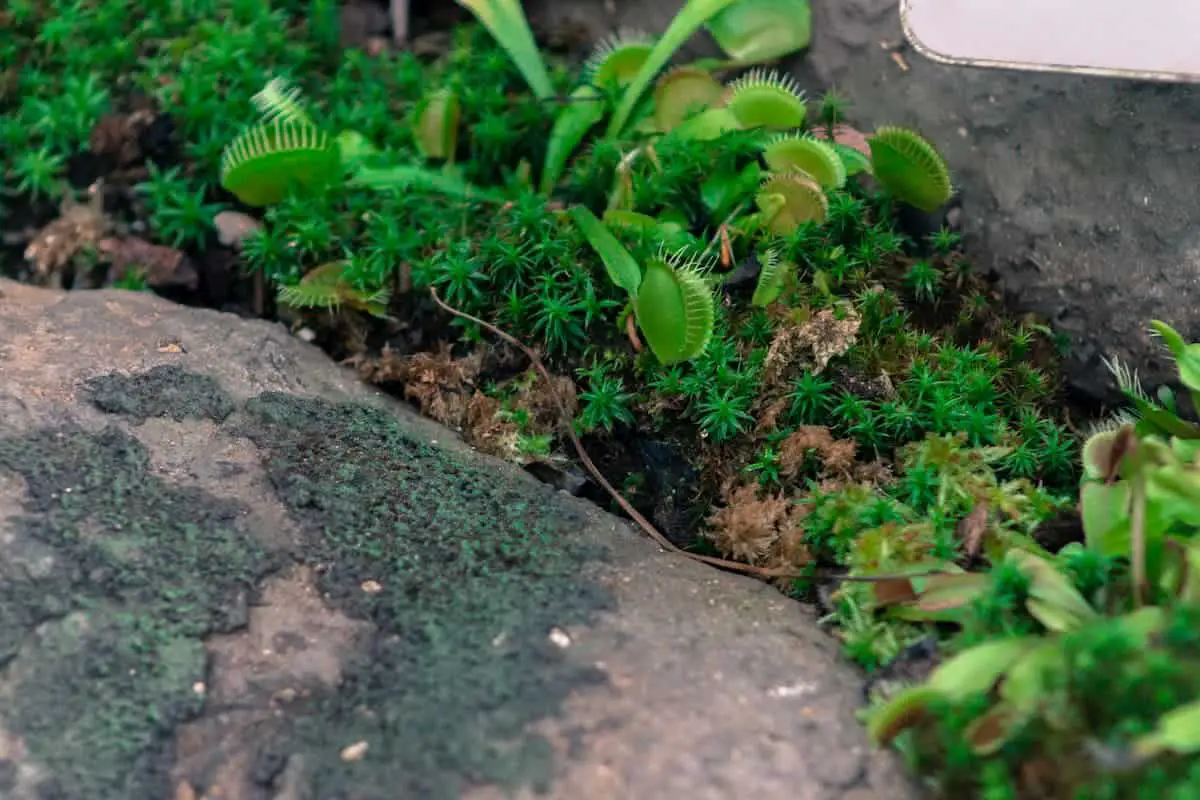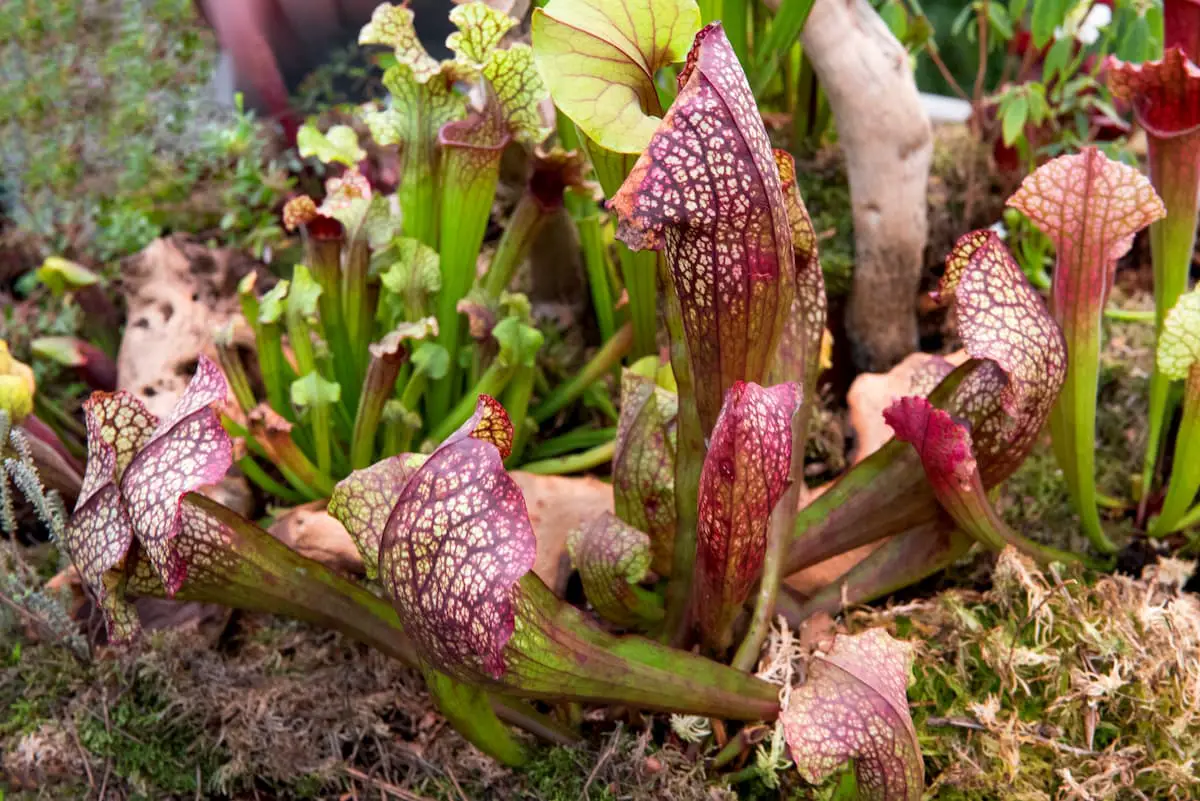When you start growing your favorite carnivorous plant, or maybe just the one you know the most about, the Venus Fly Trap you will wonder where you should keep it.
Many people want to ensure their plants are safe and can grow to their full potential, eventually wondering if keeping your Venus Fly Trap outside.
To grow a Venus Fly Trap outside you need to constantly monitor the temperatures, water regularly, control exposure to the sun, and monitor moisture levels. Growing your Venus Fly Trap outside is advantageous to its growth and the overall health of the plant.
There are a few things that you should be aware of if you are going to be planting your Venus Fly Trap outside. Not every country has the right climate for the plant to grow, with some having native bugs and animals that will harm the plant of left unattended.
Here’s everything you need to know about flying a Venus Fly Trap outside.
Where can you grow Venus Fly Traps?
The places in the world where you can safely grow Venus Fly Traps are few and far between, owing to the natural areas where they would grow. Originating from the Americas the plant loves temperate and sub-tropical areas.
This means that the plant loves areas where the ground is nice and neutral, plenty of bugs are available, and the temperatures aren’t spiking. When choosing whether or not to plant the Venus Fly Trap it is important to remember that only a few places in the world have the right soil.
What is a lot more common is for people to have the plant in pots outside, usually in some type of greenhouse where everything can be temperature monitored and checked.
Further, even if you are willing to leave your Venus Fly Trap outside at all times you should be taking it inside as colder days start approaching or just to prune the plant if needed.

What temperatures do Venus Fly Traps grow in?
While they can live in most areas of the world if the temperatures are not correct then your Venus Fly Trap is significantly damaged over time. Halting the growth of your plant or severely damaging it when sudden spikes happen throughout the year.
Many times southern countries have some trouble taking care of the plant owing to the natural cycle of the Venus Fly Trap being reliant on the seasons of the northern hemisphere.
Even with this many hotter countries require that you build special greenhouses that are well ventilated to cool the immediate area of the plant.
Venus Fly Traps love temperatures ranging from 21 degrees Celsius to 35 degrees Celsius, which is the usual summer temperatures in most sub-tropical areas.
However, most countries that aren’t sub-tropical will easily spike at temperatures above 40 degrees Celsius while others can drop well under freezing point even in the heat of summer.
How long can you leave the plant outside?
Most Venus Fly Traps will be perfectly happy to spend most of their lives outside in a proper greenhouse. If you are in an area where the temperatures are perfect then you can leave the plant outside permanently.
However, few people that love the Venus Fly Trap will live somewhere where this is possible. Which means you will have to monitor the temperatures closely for each day. You can leave the plant outside for most of the mornings and sometimes at night.
It is important to ensure that the moisture levels of the plant are always perfect. Keeping an eye on the temperatures outside will help you in stopping the plant from drying out.
Further, many owners like to keep their plants inside most of the time and put them outside during spring, this will let the Venus Fly Trap naturally catch a few bugs.
The length of time you can leave the plant outside will rely heavily on how hot it is and what the current moisture levels of the plant are.
Can you plant Venus Fly Traps in the ground?
You cannot keep a Venus Fly Trap in the ground of most areas of the world unless the plant is growing naturally in your garden already. Owing to their sensitivity to external factors, soil changes, and even wildlife the plant is rarely seen growing in the backyards of people around the world.
In their native areas in the US, the Venus Fly Trap usually grows in forested areas where many other carnivorous plants are also growing.
These plants usually grow in large bunches as well, the small potted plants that are seen on TV and in nurseries are not what they would naturally look like.
This means that while you can easily grow the plant in a few pots that you can move around as needed you will not be able to grow the plant in your garden.
Other plants and nutrients in the ground as things change during the year will affect the overall growth and might quickly kill it before even starts to grow.
What will you need to grow Venus Fly Traps outside?
While growing a Venus Fly Trap inside your house is as easy as feeding them and letting them get some sun as needed there are a few things that you need to check on if left outside.
Keeping one of the plants outside year-round requires a bit more work from you as the owner and that you check on a lot of things as the seasons change.
- Neutral Soil: In a perfect world everything would always be exactly right, however in the real world that is hardly ever true. You have to ensure the soil the plant is in is always neutral, repotting during winter and giving the root system the space to grow.
- Humidity: While keeping the Venus Fly Trap moist and humid inside a greenhouse is easy, the same cannot be said if you are keeping it outside entirely. Many owners have found they need to sprit the plant and soil throughout the day as temperatures change to ensure everything is perfect.
- Greenhouse: While keeping the plant just outside next to other potted plants is very tempting to keep bugs in control, this is not the best place for your Venus Fly Trap. Having even a small greenhouse will mean that your plant can safely grow in the environment it needs the most.
- Dormancy: Few people realize that Venus Fly Traps go dormant during the winter months, with many leaves turning black and others dying. It is during this period that many owners move them inside to keep them safe from the elements and extreme drops in temperatures. It is best to repot the plant during this period as well.
What will a Venus Fly Trap eat outside?
When left outside you will rarely have to feed the plant something extra that you caught. The plants will naturally attract any bugs in the nearby areas and eat them as time goes by. Many owners regularly check to ensure that the plant has indeed been feeding.
This can be seen by traps that are closer or by leaves turning brown after having digested the newest meal. Venus Fly Traps have always been capable of feeding themselves with the only limitation usually being when kept inside areas that are air controlled.
Even in greenhouses, the plants will eat bugs, including those that may damage other plants in your greenhouse. Making them the best natural defense against damaging and dangerous bugs such as beetles, or even millipedes.
Final Thoughts on How to Grow Venus Fly Trap Outdoors
Keeping a Venus Fly Trap outside is one of the most fun things you can do with your plant, letting you experience the challenge of not having everything perfect every time.
The plant might experience growth spurts or simply feed itself as needed, saving you the time of having to catch bugs.
Just be sure that your plant isn’t constantly about to overheat!



Leave a Reply